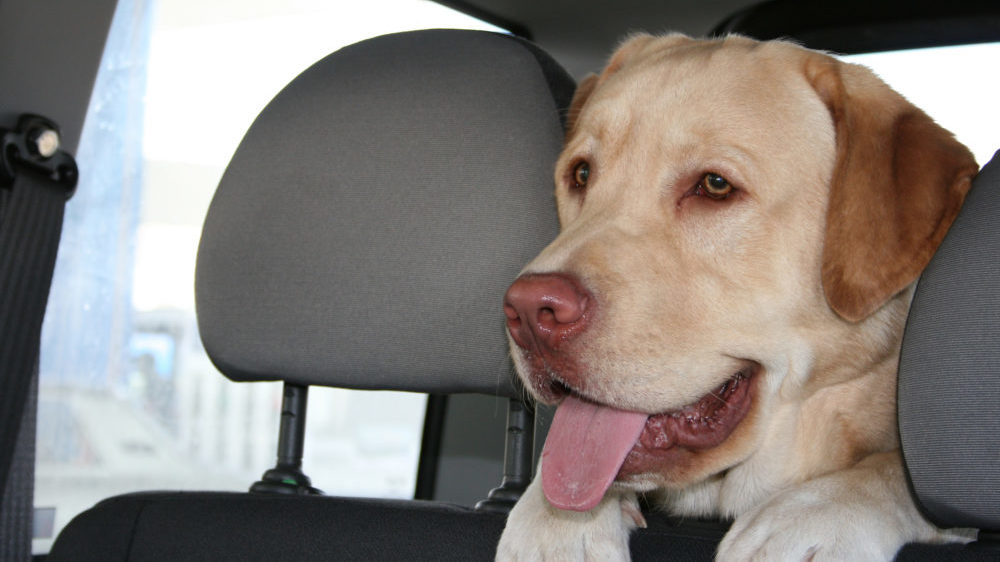Joyce A. Login, DVM
As summer approaches, many people will be traveling to exciting places and bringing their pets with them. A recent study indicated that 37 percent of pet parents travel with their pets every year.1 In fact, 72 percent of them bring their dog along on daily errands, and 45 percent take them for weekend trips.2
Sadly, these outings may not happen if that dog suffers from motion sickness. A 2018 study showed that nearly half of dog owners (48 percent) say their dog exhibits signs of motion sickness when traveling in a car.3 This has a detrimental impact on the bond, as they may not go on trips together anymore.3 Pet owners say this leads to feelings of sadness and guilt for leaving the dogs behind.3 Furthermore, it may prevent them from visiting the veterinary hospital for routine exams, because that can increase their fear and anxiety.
These dogs may show a variety of signs: vomiting, drooling, lip licking, excessive panting, pacing, shaking, whining, or yawning.4 The cause is conflicting sensory signals to the emetic center between the inner ear and visual cortex, plus input from the cerebral cortex regarding fear or anxiety related to a previous experience. 5,6 Therefore it’s important to recognize signs early to prevent these animals from experiencing this distress.
It’s not all gloom and doom, because this presents an opportunity to educate pet owners about motion sickness and maintain the health and emotional well-being of the dog and the owner. You can add this into your practice routine by reaching out to pet owners before their appointments with tactics such as having them complete a travel checklist. Dr. Marty Becker, founder of Fear Freesm and Adjunct Professor at Washington State University, says identifying motion sickness in dogs is not difficult if the right client communication tools are in place, following principles of the Fear Free practice philosophy.
“I send an email questionnaire in advance of appointments to gain understanding around any health or behavioral concerns the owner has for their pet such as fear or anxiety,” he said. “Such questions may inquire about car rides and whether the dog exhibits signs indicative of motion sickness including drooling, excessive lip licking, excessive panting, shaking and/or vomiting. Canine patients can be fearful when they have car sickness — it is an experience they do not want to repeat — so why not proactively prevent that?”
Most owners say they would travel more with their dogs if they could7, but don’t say anything to their vet because they don’t realize that anything can be done to help.8 Veterinary health care teams must be proactive about asking the pet owner if their dog suffers from this condition. Take the time to explain the signs and assure them that you can help with behavioral advice and medications such as Cerenia® (maropitant citrate), the number one choice among veterinarians for the prevention of vomiting due to motion sickness in dogs. Once a diagnosis is made, treatment can be initiated to relieve signs and restore the human animal bond.
IMPORTANT SAFETY INFORMATION:
Use CERENIA Tablets for acute vomiting in dogs 2 months and older, and for prevention of vomiting due to motion sickness in dogs 4 months and older. Safe use has not been evaluated in cats and dogs with gastrointestinal obstruction, or those that have ingested toxins. Use with caution in cats and dogs with hepatic dysfunction. Pain/vocalization upon injection is a common side effect. In people, topical exposure may elicit localized allergic skin reactions, and repeated or prolonged exposure may lead to skin sensitization. See full Prescribing Information.
References
-
- 1. 2017–2018 National Pet Owners Survey conducted by the American Pet Products Association (APPA) AR-04057
-
- 2. Cerenia Owner AU Report-Jan 2018 TI-04393
-
- 3. ZMR: Cerenia Sileo Omnibus study December 2018 (TI-04355)
-
- 4. Conder GA, et al. Efficacy and safety of maropitant, a selective neurokinin 1 receptor antagonist, in two randomized clinical trials for prevention of vomiting due to motion sickness. J Vet Pharmacol Ther. 2008;31(6):528-532
-
- 5. Yates B, et al. Physiological basis and pharmacology of motion sickness: An update. Brain Research Bulletin, 1998 47(5), pp.395-406.
-
- 6. Encarnación H, et al. Vomiting. Compendium: Continuing Education for Veterinarians. March 2009
-
- 7. Data on file. Zoetis Inc. Cerenia Motion Sickness Incidence by Symptom 2012


 This article is brought to you in collaboration with our friends at Zoetis. CER-00399
This article is brought to you in collaboration with our friends at Zoetis. CER-00399

